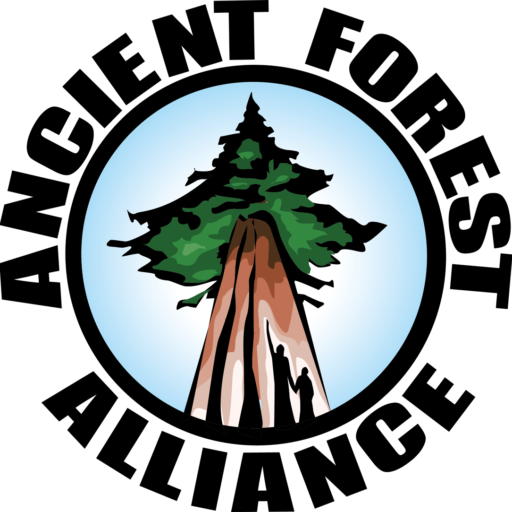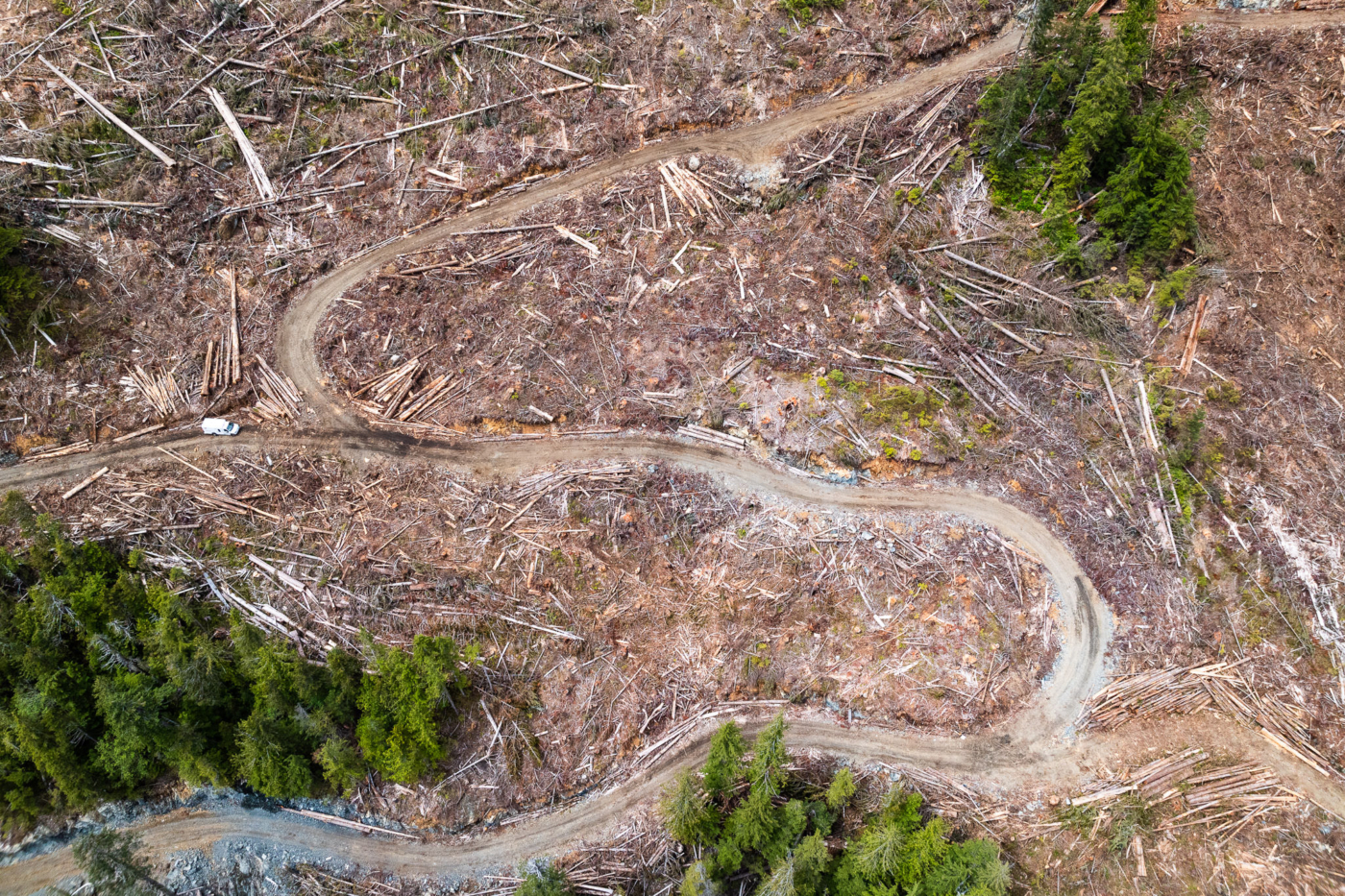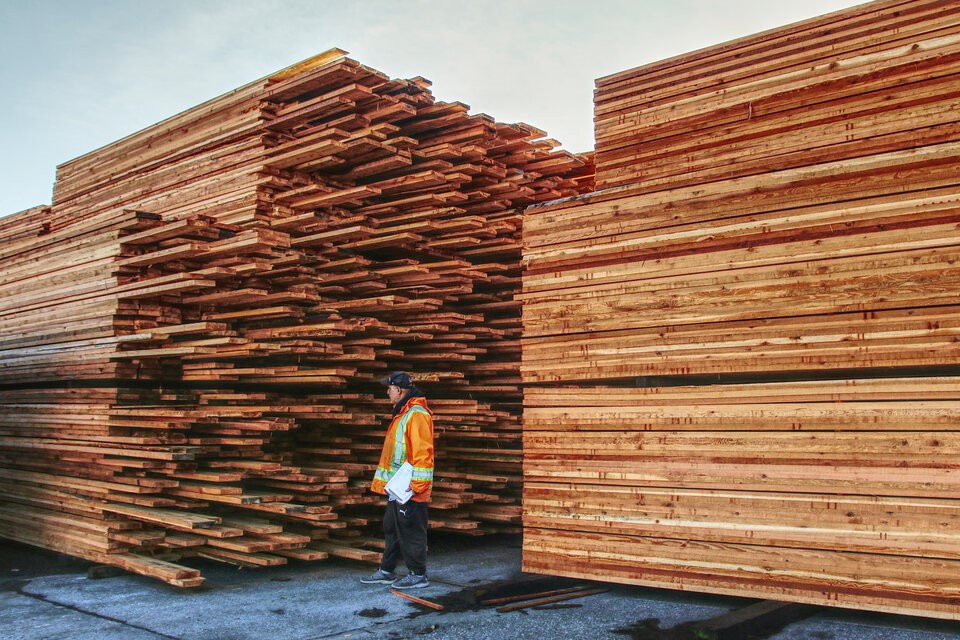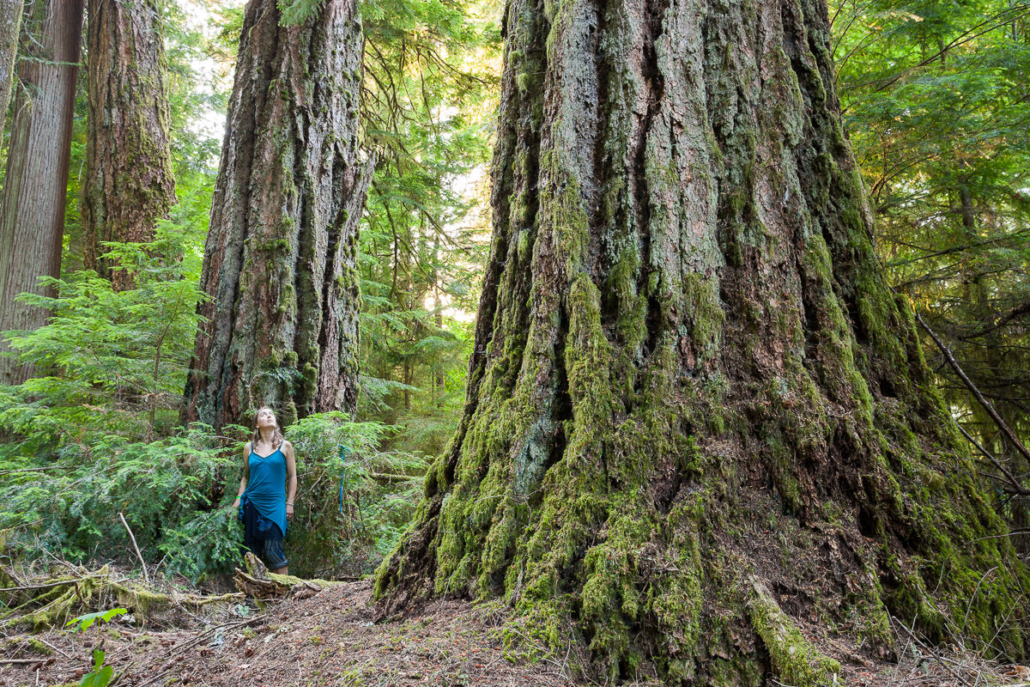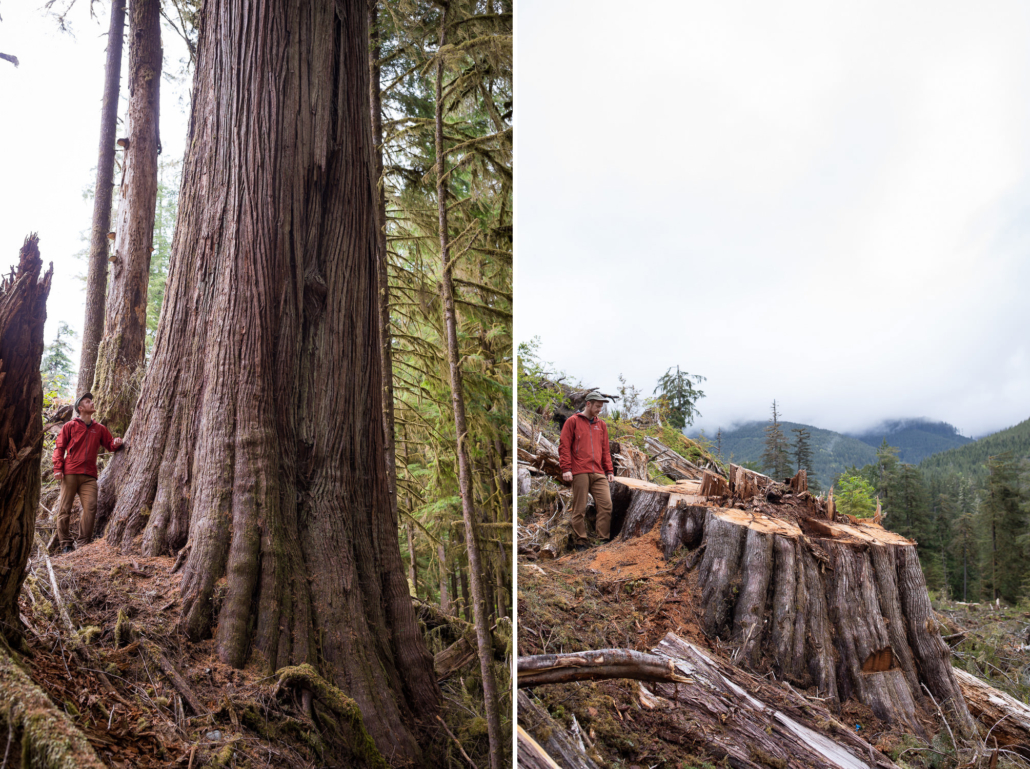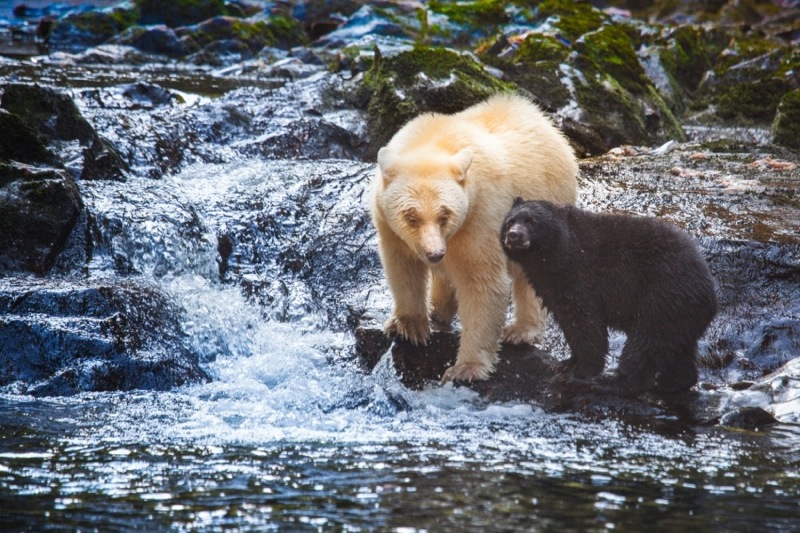 Nov 5 2014
Nov 5 2014Nineteen year battle over Great Bear Rainforest on brink of peace as momentous deadline approaches
After decades of conflict and tense meetings where nerves frayed, news of whether environmental groups, First Nations, the logging industry and government have finally settled the fate of the Great Bear Rainforest may break as soon as Monday.
To fully appreciate what a momentous moment this is for B.C. and those facing environmental conflicts around the world, one needs to start at the beginning.
The Chairman
It was the first Traditional Land Use committee meeting dealing with the Great Bear Rainforest in northern B.C. and everyone, unsure where to begin, decided the next person to show up would be the chairman.
Spanning 64,000 square kilometres along British Columbia’s Central and North Pacific Coast, the Great Bear Rainforest was one of the largest unspoiled temperate rainforests in the world, and the centre of a heated battle between industry and environmentalists.
Dallas Smith, whose imposing stature is countered by his cheerful smile, was just 23 at the time. He wandered in late eating a sandwich and was assigned the job. His community, the Tlowitsis Nation on Turner Island, lacked the capacity and resources to respond to the endless demands made by industry and government so he was happy to help where he could.
It was supposed to be a short-term gig, a two year deal that gave him a way to make some money and gain a bit of experience before heading off to university.
Twenty years later, Smith, now President of the Nanwakolas Council, is still on the job.
Sitting across from me wearing a sweatshirt and a baseball hat, Smith holds his grinning 18-month old daughter Amelia and talks about how that first meeting turned into a career and became a key component of the Great Bear Rainforest Agreement, an exhaustive consultation process now nearing completion.
After four years of global environmental campaigns and 15 years of often tense negotiations, representatives from the forest industry, environmental groups, First Nations and government are now about to take the last crucial step from negotiation to implementation and legislation.
“Most of government, 'big G' government, thinks the Great Bear Rainforest is done. We announced it, they announced it 20 times, they all got lots of podium time about it… the hubbub is kind of over,” said Smith. “But what the general public doesn't know is that it all has to be implemented now.”
If finalized, the agreement will distinguish the province by protecting not only a massive tract of rainforest, but also salmon rivers, bears and wolves. It's home to the iconic “Spirit Bear”, a white bear revered by First Nation cultures, found nowhere else on the planet.
It will also be an agreement that is unique in the world, with conflicting parties coming together to keep an ecosystem intact.
“What’s going on right now is a tremendous amount of work,” said Valerie Langer, director of B.C. forest campaigns at ForestEthics Solutions. “There's an unbelievably busy schedule of policy writing, drafts of legislative language and meetings between all the parties.”
“The province is poised to seize this moment — Maybe Premier Clark thinks it was somehow part of the Campbell legacy that she didn't want to be a part of, but it's totally theirs (the Clark government's) to seize. This is an opportunity of a global scale.”
Langer has been an activist for most of her life, largely focusing on protecting the forests on the B.C. coast. She speaks with the insights gained from years of fighting to keep British Columbia's forests standing.
“First Nations, the forest industry, and the environmental community are all aligned and saying ‘we're ready, by the end of 2014 we have a package ready and it can go out’,” Nicole Rycroft said about meeting the upcoming deadline after years of frustrating delays. Rycroft, a native Australian, is the founder and executive director of Canopy, an influential NGO that uses market forces to protect forests around the world. A fearless activist, she once arrested at the Beijing Olympics for climbing billboards to hang a banner that protested the Tibetan occupation.
She jokes that her hair has “gone gray” since the early years of Great Bear Rainforest conservation efforts.
“Everybody recognizes that it needs to be legislated [to] provide a level of certainty for the Great Bear Rainforest.”
The Great Bear Rainforest Agreement includes four key elements: rainforest protection, improved logging practices, the involvement of First Nations in decision making, and the provision of conservation financing to enable economic diversification. The Rainforest Solutions Project, a coalition comprised of ForestEthics, Greenpeace, and Sierra Club B.C., describes it as a “conservation and human well-being initiative”.
From blockades to boardrooms
It's hard to imagine today, but up to 2005, just seven per cent of what became known as the Great Bear Rainforest was protected in parks. Logging companies had already been in the area for 100 years, and it wasn't until the 90s that environmentalists — the very same who had led the biggest blockades in Canada's history at Clayoquot Sound — demanded that industry stay out of pristine areas of the Great Bear Rainforest.
“People started to understand what's going on in forestry….[they] were becoming very concerned about the tremendous increase of the amount of logging in the province,” Langer said.
“The industry figured that the environmentalists would just never get there. It was so remote and logistically, it would be too difficult,” Patrick Armstrong of Moresby Consulting said in a TV interview. A former logger, Armstrong was an forestry industry representative who was at the forefront of the negotiations that were to take place.
Armstrong was amazed to hear on the radio while at a logging site on Roderick Island that there were people in white coveralls, emerging from the woods.
By the time the logging crew arrived, activists had locked themselves with bike locks to various pieces of equipment and hung massive banners calling for the protection of the rainforest.
A game-changing marketing campaign
Before a pattern of cooperation set in, “there were incredibly acrimonious campaigns on both sides,” as environmentalists, governments, and industry all fought to get the public on their side. “We were slinging metaphorical bullets at each other,” Valerie Langer smiles to remember it all as she tells the story.
Environmental organizations bought ads in Der Speigel and The New York Times while companies hired global PR giant Burson-Marsteller, whose clients have included Monsanto and tobacco company Phillip Morris.
“We launched into vicious campaigns calling each other down,” said Langer.
Many in the First Nations community were shocked at the amount of attention the campaign was getting. “We had global interest in the plight of our communities,” Smith said. “No matter how all this plays out, that's one thing I’ll always owe the environmental community, the awareness they brought to how unacceptable it is how my people have lived and been treated in Canada.”
From that flowed a market campaign that shook industry. “There had been boycott campaigns done before, where you get the consumer not to buy. But this was different. Instead of going to 300 million people and saying ‘change your minds about what you buy’, we were going to 200 major purchasers and saying ‘don't purchase from here’,” Langer said. The campaign targeted huge paper suppliers like Kinkos and Home Depot. “Their corporate decisions affected 300 million people.”
Their ads called out logging companies by name. They garnered international attention and inspired protests worldwide.
Then logging and paper corporations — including Canadian Forest Products, Western Forest Products, and Weyerhaeuser and Interfor — came to the table to talk with Rainforest Action Network, Natural Resources Defense Council, Greenpeace International, Greenpeace Canada and Sierra Club of British Columbia as part of the Joint Solutions Project. They came to a 'standstill agreement' to stop the market campaigns and start negotiating. Province and First Nations got involved as well, in later government-to-government talks.
“It was extremely difficult to get to the point where we could actually sit in the room to find solutions,” Armstrong told the Vancouver Observer.
“The catalyst for that was that both the industry and NGOS knew they couldn't sustain open warfare forever. They actually had to come up with some outcomes in the interests of both parties.”
Table-flipping arguments
In the early days, it was hard for polarized parties to talk to one another.
Negotiations with First Nations representatives got heated. Smith explained how logging companies responded to discussions about social licensing and revenue sharing.
“They went nuts,” he said. “There were meetings where there was literally violence. Tables got flipped, probably quarterly. We’d have to pull people apart, get them to calm down.”
Armstrong said he didn't recall any tables thrown in his meetings but he said the process was “very, very tense.”
He also said the negotiations changed the relationship between environmentalists and industry.
“Once you start actually negotiating with one another, it requires a type of accountability from the environmental groups too…, because they'd gone to the marketplace, dealing with big businesses in the publishing or paper side, or in the lumber side. The Home Depots. The Time Magazines of the world. They suddenly needed to be accountable to those organizations. They couldn't just show a bunch of photos about how bad everything was and ignore the fact that…there's a change taking place.
He said once conflicting parties start negotiating with each other, they couldn't resort to saying “outrageous things” about the other party anymore.
“Once you are collaborating you can't do that any more. If you do it, you lose all credibility.”
Eventually, however, people from every side began to forge unlikely alliances. They had been working together long enough, Smith said, that their clashing positions started to give way to personal connections.
“We all have roles to play, but when you're stuck in Bella Coola because of a storm, you gotta go for dinner at some point. There are only two restaurants, and you gotta sit with somebody,” said Smith laughing.
“You get past the conflict and start to realize, okay, he’s got a family just like I do.”
An international model for forest conservation
Currently under ecosystem based management, 33 per cent of the old-growth is preserved while the other regions is logged responsibly, with the need to protect animal habitat and water systems taken into consideration. It aims for high levels of human well-being at low ecological risk.
Huge changes have happened over the course of negotiations. Ten years ago, less than ten cent of the Great Bear Rainforest was under protection. In 2006 Premier Gordon Campbell put 2.1 million hectares of forest under protection and collected $120 million to be put toward First Nations initiatives. And in 2009, amendments to logging regulations set an additional 20 per cent of the forest off limits, totally 50 per cent of old growth forests under protection.
While 50 per cent is a big achievement on paper, conservationists and scientists say that to sustain the ecological integrity of the Great Bear Rainforest, 70 per cent of natural levels of old growth forest have to be maintained.
“Seventy per cent of the old growth needs to be conserved,” Nicole Rycroft confirmed.
“If we only get 50 per cent…we're going to fail as to what the ultimate objective was that everybody agreed to.”
Human well-being in the Great Bear Rainforest
When recommendations were presented collaboratively by forestry representatives and environmentalists in January 2014, “the two warring parties,” it showed the government that the fighting was finally over – that the former adversaries had agreed on how the Great Bear Rainforest should be saved, Rycroft said.
“There’s an unbelievably busy schedule of policy writing, drafts of legislative language, and meetings between all the parties,” she said.
“[And] we have this elephant in the room… The First Nations have said since 2009 the next round of conservation doesn't happen without the human well-being initiative,” she said.
The human well being component of the Great Bear Rainforest is a key part to the agreement, yet it has remained poorly understood for years. Largely, Smith said, because it is a big concept rooted in thousands of years of history.
“My people have been in our territory since time immemorial… we’re not simply dependent on the ecosystems around us, we’re a part of the ecosystems,” said Smith.
“We need to all work together to make sure that we continue to be a functioning part of these ecosystems. And what it takes to keep us there is the sharing of benefits and revenues that come from the extraction of resources,” he said.
Though specific details have not been released, the human well-being initiative would aim to raise the standard of living for First Nations communities in the Great Bear Rainforest until education, employment, and health levels were on par with rest of Canada.
“We’re one of the most economically advanced countries in the world, with the highest levels of comfort and all those sorts of things, but you go 50 miles outside of a major urban area and it is just deplorable,” said Smith.
Smith and his colleagues went to the 27 First Nations in the Great Bear Rainforest and asked them to list the ten biggest challenges facing their communities. The process took years but the results were clear. Each distinct nation listed nearly identical challenges, they were even in the same order of importance.
The top issue faced by each nation was the lack of capacity – training, time, funding – needed to process and respond to proposals from industry planning to extract resources from their land. The inability to engage with industry, often because they are overwhelmed by so many referrals at once, means First Nations communities are losing out on the opportunity to have a say on what goes on in their traditional territory.
“It was literally an epiphany moment for us,” said Smith of the realization that every community was struggling with the same issues. It gave them the ability to focus, organize solutions, and work collaboratively across nations.
Other often cited concerns were linked to high poverty levels, unemployment rates, and mental and physical health. The communities said they needed local employment security, relevant jobs training, and the establishment of a guardian watchman program that would allow them to monitor the commercial activity taking place in their region.
Expecting people in rural communities to leave to find work when there is so much money being made off of their traditional land is not good enough, Smith said.
“We watched millions of dollars a day worth of our natural resources get trucked out, right past our reserves, while we’re living in third world conditions,” he said. His people are struggling to live off the land like they used to because of all of the industrial activity, yet they are also not making a living wage off of the economic boom that is happening around them.
For Smith and his collogues the Great Bear Rainforest Agreement is about more than economics and business negotiations. There has been so much anxiety and disparity in this process he says. He pauses to smile at his daughter who is grinning at him from her highchair, but his face falls when he turns back to explain how heavy this situation has become.
“Industry, government, and ENGOs forget we have to go home and we have to face our community,” said Smith. “I have to go look people in the eye who lost someone to suicide because they literally said in their note ‘I have no other options, there is nothing I can do in this community, I had to find a way out.’”
“We have to face that. And it’s family, it’s all family.”
Pushing over the finish line
A sign of the Province’s commitment came in 2013 when Forestry Minister Steve Thompson left a caucus meeting and flew out to attend a customer-investor roundtable that was attended by some of the NGOs.
Rycroft said he gave the group a personal guarantee that finalizing the Great Bear Rainforest Agreement was a priority for the government.
“The key piece is that the Great Bear Rainforest Agreement is not finished,” said Rycroft. “We can see the finish line. We just need to push it over.”
“The forest industry wants to see these agreements implemented,” Armstrong said firmly.
“Where I sit today, there's a lot of leadership being taken by the players. I am confident we are on track to implementing the agreements, we are close to achieving what we sett out to do 15-years ago.”
Smith is cautiously optimistic that negotiations will be successful by the end of December.
“I hope I get everything on my list but I’m pragmatic, I’ve been around enough to know I’m not going to get it all now. Over time? Yeah, I’m going to get everything on that list and that is a guarantee.”
